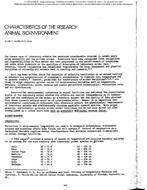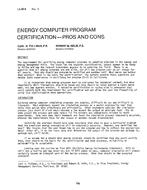Evaluation of various processes for tobacco smoke odor control in occupied spaces would be facilitated if a mixture of known substances were available that could reproducibly generate the essential chemical and sensory features of such an odor. Although odors of smokes of different tobacco products differ, they are all recognizable as tobacco smoke odors. Thus, they are expected to contain common components which jointly generate the characteristic odor. If these components were known, an appropriate simulant mixture could be formulated to reproduce the tobacco smoke odor. An odor generated by dispensing such a mixture into a room in a controlled amount should behave, with respect to various approaches to its control, as a typical tobacco smoke odor. The effort to design an appropriate simulant mixture consisted of three phases:
- Gas-chromatographic/sensory assay, aided by a computerized statistical data analysis, to find which chromatographically indicated components are primarily contributing to the tobacco smoke odor.
- Mass-spectrometric identification of those components which are found odor-relevant in Phase I.
- The design of a mixture which would contain the odor-relevant components and generate an odor recognizable as reasonably characteristic of tobacco smoke odor. Phase I resulted in an already published (1) list of 25 odorants; identified at that time only in terms of odors and gas-chromatographic behavior. The relative significance of these components in contributing to the odor intensity and character of tobacco smoke was also estimated. This report presents the findings resulting from the Phase II and Phase III study.
Product Details
- Published:
- 1975
- Number of Pages:
- 13
- File Size:
- 1 file , 1 MB
- Product Code(s):
- D-BO-2372
- Note:
- This product is unavailable in Russia, Belarus


